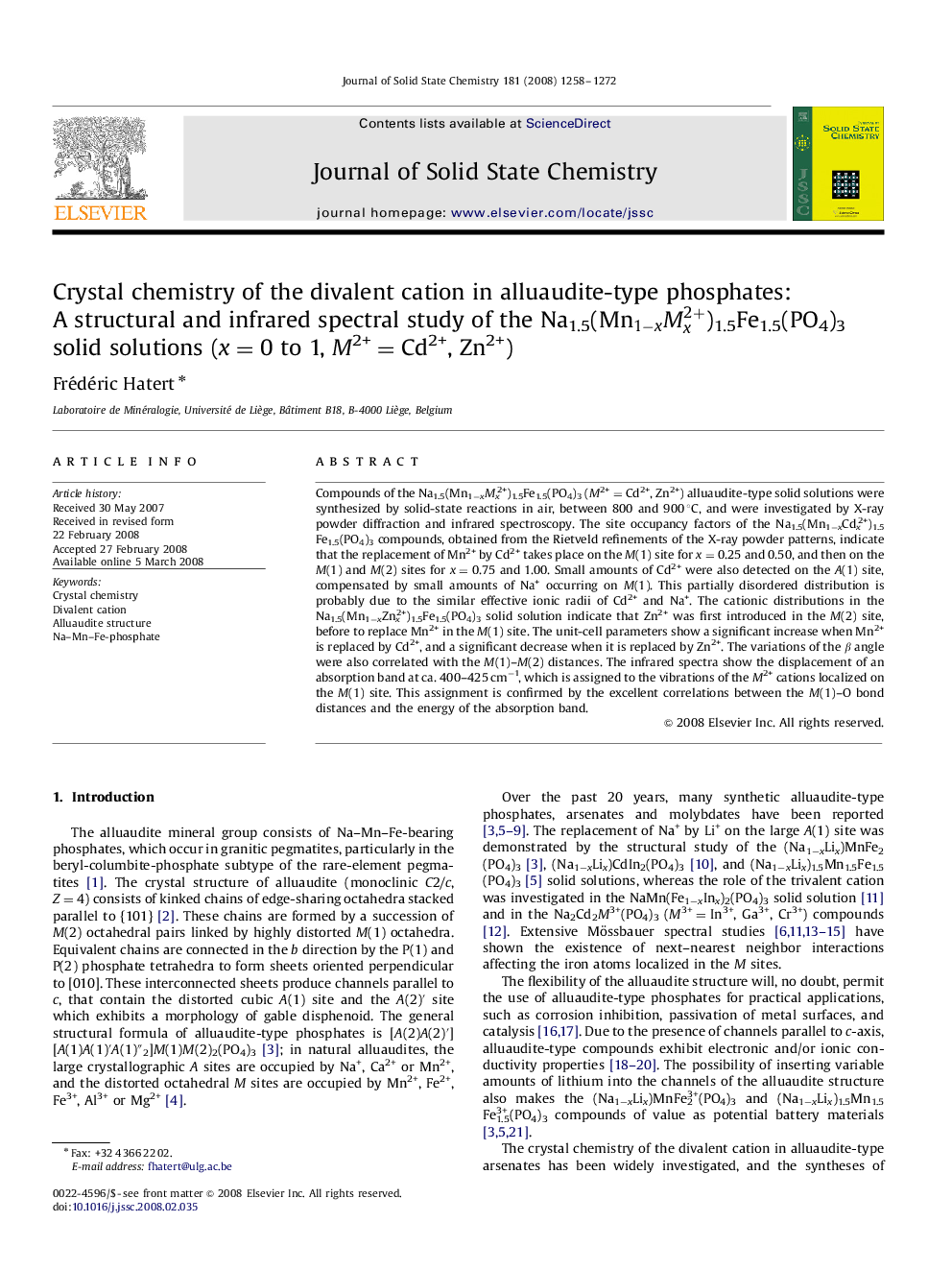| Article ID | Journal | Published Year | Pages | File Type |
|---|---|---|---|---|
| 1333048 | Journal of Solid State Chemistry | 2008 | 15 Pages |
Compounds of the Na1.5(Mn1−xMx2+)1.5Fe1.5(PO4)3 (M2+=Cd2+, Zn2+) alluaudite-type solid solutions were synthesized by solid-state reactions in air, between 800 and 900 °C, and were investigated by X-ray powder diffraction and infrared spectroscopy. The site occupancy factors of the Na1.5(Mn1−xCdx2+)1.5Fe1.5(PO4)3 compounds, obtained from the Rietveld refinements of the X-ray powder patterns, indicate that the replacement of Mn2+ by Cd2+ takes place on the M(1) site for x=0.25 and 0.50, and then on the M(1) and M(2) sites for x=0.75 and 1.00. Small amounts of Cd2+ were also detected on the A(1) site, compensated by small amounts of Na+ occurring on M(1). This partially disordered distribution is probably due to the similar effective ionic radii of Cd2+ and Na+. The cationic distributions in the Na1.5(Mn1−xZnx2+)1.5Fe1.5(PO4)3 solid solution indicate that Zn2+ was first introduced in the M(2) site, before to replace Mn2+ in the M(1) site. The unit-cell parameters show a significant increase when Mn2+ is replaced by Cd2+, and a significant decrease when it is replaced by Zn2+. The variations of the β angle were also correlated with the M(1)–M(2) distances. The infrared spectra show the displacement of an absorption band at ca. 400–425 cm−1, which is assigned to the vibrations of the M2+ cations localized on the M(1) site. This assignment is confirmed by the excellent correlations between the M(1)–O bond distances and the energy of the absorption band.
Graphical abstractThe crystal structure of Na1.5Zn1.5Fe3+1.5(PO4)3.Figure optionsDownload full-size imageDownload as PowerPoint slide
